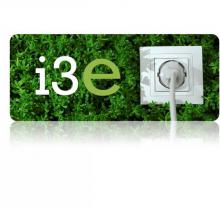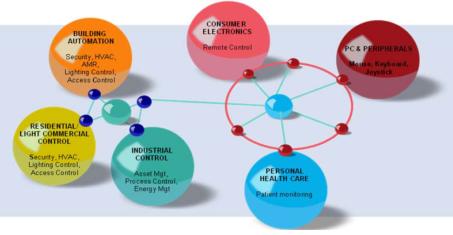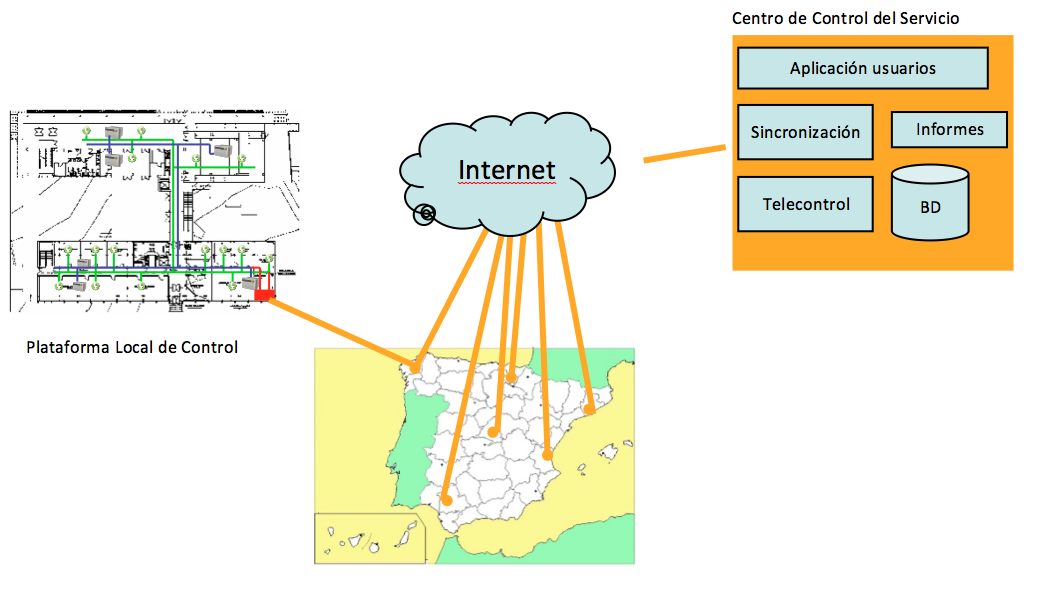I3E

This project is co-funded by the Spanish Ministry of Industry, Tourism and Commerce in (ref. TSI-020100-2009-297), part from the National Plan of Scientific Research, Development and Tecnological Innovation. (2008-2011).
The general objective of the project is the creation of a energy management web platform for a group of buildings
The general objective of this project is the creation of a web platform to offer real-time energy consumption monitoring for a group of buildings (i.e. a certain company's offices). In order to do this, a real implementation will be realized in two demonstrators located in two different weather regions: Madrid and Sevilla.
This platform will allow to analyze power consumption in buildings and offer added value services as:
- Real time building energy consumption, with alarm notification caused by anomalous behavior, obtaining the information from a ZigBee sensor network. Consumption monitoring in kw, euros and CO2 equivalent tons.
- Predicition of the energy consumption of the current month based on the historic consumption. Establishment of saving goals and evaluation of the probability of achieving this goals.
- User information about the possible saving solutions in function of the consumpiton type.
- Consumption comparision between the different buildings and saving goals achieved.

Objective of the project
The objective of this project is to conduct a planned research to study TECHNIQUES TO BE USED FOR CREATING A REMOTE SERVICE OF ENERGY CONSUMPTION IN BUILDINGS for customers who are spread throughout the country. The aim is that customers of the service can perform remote management of energy demand of these buildings.
This service is intended to achieve three goals: reduce energy consumption of buildings, have a centralized control of all of them and get a monitoring status of each of the devices that consume energy.
Briefly, we describe general objectives and specific objectives of the project:
1 General objectives.
The overall objective of the project is the acquisition of knowledge to create a medium-term web platform that provides a service for viewing in real-time energy consumption occurring in a set of buildings (for instance, branches of a given bank, dealers of a particular brand of cars, the powers of a University Campus, the housing complex of urbanization, etc.).
This platform will enable the analysis of consumption in the connected buildings and offer value-added services such as:
Information on the consumption of each building in real time with alarm notification for anomalous behaviour. Viewing consumption in natural units (kw for electricity consumption), in euros and in equivalent tons of CO2 emitted into the atmosphere.
- Calculation of expected consumption in the current month based on historical consumption so far. Setting savings goals and evaluation of the likelihood of achieving these objectives based on the consumption made.
- Information to users of potential savings schemes depending on the type of consumer (for instance, suggestion of contract changes to billing time slots, etc.).
- Comparison of consumption made in the various buildings and the savings achieved.
2 Specific Objectives
To achieve the above objective, the following specific objectives are stablished:
- Study of the mechanisms of automatic management of energy demand of a building.
It is necessary to study and design the tools necessary for the automation of the control of HVAC systems, lighting and control of the passive elements of the building (blades, shutters, blinds...). This system for intelligent energy management will work combining data obtained from a network of temperature sensors, lighting and humidity (placed both inside and outside the building), necessary comfort data for the welfare of the building occupants (lighting levels, temperature and air quality) and habits of occupants (actual occupancy of the rooms of the building). The system will automatically act on the on/off of electrical/ electronic systems in order to minimize building energy consumption without loss of comfort conditions.
- Study of wireless sensor networks and actuators (using Zigbee technology) needed for such systems.
It is intended to define the optimal network for the proposed application (types of network nodes, optimal scope, network topology, sampling frequency of sensors, data formats, etc.). Furthermore commercially available devices that could be used for network implementation will be studied. If technological market shortages are detected, they would be solved by designing the necessary devices.
- Study of possible user interfaces for the visualization web application and comparison of consumption.
The future application, apart from a user-friendly interface, needs to show the information in a clear and simple way. Terms to establish comparisons between the consumption of different buildings should be studied. That is, besides the absolute data, the application must allow correlate consumption with the particular characteristics of each building (exact location, orientation, existing passive elements). Thus the system can offer users recommendations for improving the energy efficiency of their buildings.
- Design and development of a communications gateway.
This gateway will serve to provide access to measures collected by the wireless sensor network, and allow the collection of measurements from the sensors installed in the building and send commands to the elements under control. The gateway will have the following characteristics:
- Integration of multiple communications protocols common in the home automation field.
- Support wireless communications. Access to a wireless network Zigbee sensors.
- Decoupling customers of the gateway and the elements installed in the test field. It is intended that customers are not aware about the protocols used to communicate with the controllable elements of the building.
- Definition of an abstract model that unifies management devices.
- Definition of a semantic model of the building that can be used for:
- Setting the gateway itself
- Definition of control rules the catwalk
- Implementation of a layer of REST services offered by external applications to access devices defined on the gateway.
- Using the Java framework for OSGi modularity.
- Running Java in resource-limited settings.
Thus, monitoring and control of energy consumption for buildings is possible. The communications gateway access using different protocols to different subnets and performance measurement. Then unifies access to data collected and offers via TCP / IP.
Main features of the system
As previously discussed this is an industrial research project, i.e., it aims to acquire new knowledge and techniques that can be useful for creating at a later stage new products and services.
Energy Demand Telemanagement Service under study in this project would be a full-service, distributed and scalable architecture that facilitates the independent operation of devices deployed in the building and control, remote monitoring and centralized management. The Service would have the following characteristics:
- Multi-site. The needs of all the customer buildings’ are met.
- In geographic dispersion. Throughout the Spanish territory is covered, depending on the specific location of each building.
- Centralised. All technical alarms, besides reported locally on each of the buildings, are collected centrally in a single common control center for all buildings connected to the service. This allows for incident management services and comparative performance of buildings that would otherwise be impossible to implement.
For monitoring consumption and device status we intend to use in each building a network of sensors and actuators with all ZigBee management devices connected to it.
The following figure shows the main scheme of the Telemanagement System:

Telemanagement System Schematic
Local Control Platform and Service Control Center: In this scheme two main components differ connected to the Internet.
CeDInt role in the project
The main role of CeDInt in the project has been the development of the web management platform and the implementation and validation of a demonstrator in the CeDInt building.




